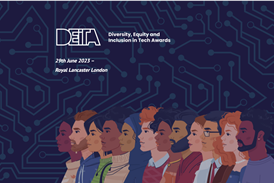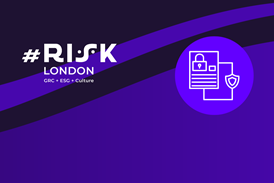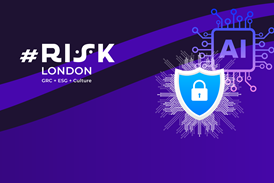The dawn of a new U.S. presidential term often brings with it a wave of policy shifts and economic recalibrations. Under the current Trump administration, one of the most significant and potentially transformative proposals revolves around a colossal $500 billion federal investment in Artificial Intelligence (AI).
This ambitious initiative, aimed at reasserting American leadership in AI and fostering domestic innovation, promises to accelerate technological advancement across sectors. However, such a massive influx of capital and focus into AI will inevitably create a new and complex landscape for Governance, Risk, and Compliance (GRC) professionals.
The ripple effects on risk management, regulatory frameworks, data security, ethical considerations, and corporate accountability will be profound, demanding proactive strategies from businesses across the United States.
This “new world order” for AI and its implications for GRC will be a central theme at the upcoming #RISK New York conference (July 9-10, 2025), particularly in the session titled “The $500 Billion Question: How Trump’s AI Investment Could Transform GRC and Risk Management” (Day 1, 9:30 AM - 10:15 AM EST).
The AI Gold Rush: Opportunities and New Pressures
A federal investment of this magnitude would undoubtedly act as a powerful catalyst for AI development and adoption. We could anticipate:
- Accelerated Innovation: Increased funding for AI research and development across government agencies, academia, and public-private partnerships, potentially leading to breakthroughs in areas like advanced algorithms, next-generation hardware, and novel AI applications.
- Infrastructure Build-Out: Significant investment in AI infrastructure, including data centers (potentially with a focus on domestic energy sources like coal, as hinted in some early administration directives) and high-performance computing resources.
- “America First” AI Procurement: Federal agencies are likely to be mandated to prioritize American-developed and produced AI products and services, creating a surge in demand for domestic AI solutions and potentially new opportunities for US tech companies.
- Boost to Key Sectors: Industries like defense, healthcare, manufacturing, and energy could see targeted AI investment, aiming to enhance national security, improve efficiency, and drive economic competitiveness.
While these opportunities are significant, the sheer scale and speed of such an AI push will place immense pressure on existing GRC frameworks and risk management capabilities.
GRC and Risk Management: The Critical Transformation Ahead
The proposed AI investment isn’t just about funding technology; it’s about fundamentally altering how organizations operate, make decisions, and manage risk. GRC and risk management functions will need to transform rapidly:
- Redefining Data Security: AI systems are data-hungry. A massive scaling of AI will lead to unprecedented data collection, processing, and storage. This significantly expands the attack surface for cyber threats and magnifies the potential impact of data breaches. GRC professionals must ensure robust data governance, privacy-preserving techniques (like federated learning or synthetic data), and cutting-edge cybersecurity measures are embedded from the outset.
- Evolving Regulatory Frameworks: While the current administration has signaled a “pro-innovation” and potentially deregulatory stance compared to its predecessor, the sheer impact of widespread AI adoption will likely necessitate new forms of oversight. We may see a shift from broad, principle-based AI ethics guidelines (like those from the previous administration or the EU AI Act) towards more sector-specific or risk-based regulations focused on ensuring safety, security, and preventing misuse, especially in high-impact AI systems affecting civil rights or critical infrastructure. Recent OMB memoranda already indicate a move towards agency-specific AI risk management practices.
- Ethical Considerations at Scale: As AI systems become more autonomous and influential, ethical dilemmas surrounding bias, fairness, transparency (explainability), and accountability will intensify. GRC functions will be pivotal in developing and enforcing ethical AI frameworks, conducting bias audits, and ensuring human oversight where critical.
- Transforming Decision-Making Processes: AI promises to revolutionize decision-making, from automated loan approvals to predictive maintenance. GRC teams must ensure these AI-driven processes are transparent, auditable, and aligned with the organization’s risk appetite and ethical values. The “black box” nature of some AI models will present significant challenges for validation and accountability.
- Corporate Accountability in an AI World: Who is responsible when an AI system makes a harmful decision? The new investment will accelerate the need for clear lines of corporate accountability for AI development, deployment, and outcomes. GRC will play a key role in defining these responsibilities and ensuring mechanisms for redress.
- Impact on Human Capital: The widespread adoption of AI will transform the workforce. GRC professionals will need to consider risks related to job displacement, the need for upskilling/reskilling, and the ethical implications of AI in human resource management.
- Third-Party AI Risk: As organizations increasingly rely on third-party AI vendors and platforms, managing the associated risks (security, compliance, data privacy) becomes critical. GRC frameworks must incorporate robust third-party AI risk management.
Cross-Functional Collaboration: The Linchpin for Success
Successfully navigating this AI-transformed landscape requires breaking down traditional organizational silos. GRC can no longer be the sole domain of the compliance or risk department. It must become an integrated, cross-functional effort involving:
- IT and Cybersecurity: To secure AI systems, data, and infrastructure.
- Legal and Compliance: To navigate evolving regulations and ensure ethical deployment.
- Data Science and AI Development Teams: To embed GRC principles into the design and development lifecycle.
- Business Units: To understand the specific risks and opportunities of AI within their operations.
- HR: To manage the human capital implications.
- The Board: To provide oversight and ensure AI strategy aligns with overall corporate governance.
Educating all these teams, and particularly the board, on the nuanced risks and governance requirements of scaled AI will be fundamental to mitigating potential downsides and maximizing the benefits of this technological wave.

#RISK New York: Expert Insights on the AI Transformation
The session “The $500 Billion Question: How Trump’s AI Investment Could Transform GRC and Risk Management” at #RISK New York (Day 1, 9:30 AM - 10:15 AM EST) is designed to provide a crucial deep dive into these very issues.
This panel, featuring Jake Bernardes, CISO at Anecdotes, will explore the direct implications of significant AI investment for risk management frameworks, regulatory expectations, ethical considerations, data security, decision-making processes, and corporate accountability. Attendees will gain invaluable insights into how their organizations can proactively adapt and position themselves to thrive in this new AI-driven era.
Preparing for an AI-Saturated Future
The proposed federal investment in AI signals a clear direction: AI will become even more deeply embedded in the fabric of business and society. For GRC and risk management professionals, this isn’t just another technological shift; it’s a call to fundamentally re-evaluate strategies, tools, and collaborative approaches.
The organizations that successfully integrate AI governance into their core GRC frameworks and foster a culture of responsible AI adoption will be the ones to navigate the risks and reap the substantial rewards of this transformative era.
Join the conversation at #RISK New York to prepare for this AI-driven future:


















No comments yet